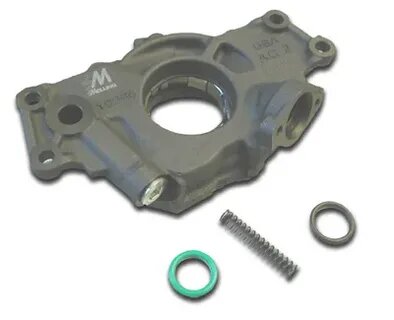The most challenging duty for the oil pump is to feed oil to the connecting rod bearing that is the farthest away from the pump. The oil travels three to four feet to reach this bearing, turning multiple square corners and passing through tiny holes in the crankshaft. The rod bearing is not helping things either. It is in a circle; hence, centrifugal force draws the oil from the bearings.
An engine oil pump is not required in a typical grocery-getter. If you're drag racing a strip car, the engine clearances can be slack enough that it's acceptable—moving oil around burns extra horsepower for no purpose.
Benefits of an Engine Oil Pump for a Car
- Specifies the Volume of Oil That a Pump May Move At Any Particular Rpm
The volume of engine oil pumps that can move at any particular rpm is determined by the size of the gears or rotors. Resistance to this movement creates pressure. There will be no pressure if the pump is not big enough to match the engine's needs. Alternatively, if the engine's demands exceed the pump's capacity, there will be a loss. Large-volume pumps come in; they handle any additional engine demands.
- Increases in The Engine's Oil Consumption
Higher rpm, the ability to rev faster, larger bearing clearances, remote oil cooler and filter, and any combination of these cause an increase in the engine's oil consumption. Most high-volume pumps have a higher pressure to assist get the oil to the bearings quicker.
- Reduces the Flow
Restrictions may also reduce flow in the oil pump intake tube. The screen mesh that covers the pickup intake might be blocked with varnish and debris, causing a flow to the pump to be restricted. Many performance pickup tubes feature a more extensive diameter tube to the oil engine water pump and employ a more open honeycomb screen design or a drilled cover to minimize constraints.
A camshaft-driven dual gear oil pump within a crankcase rotates at half the speed of a front-mounted oil pump powered directly by the crankshaft. The flow rate of a front-mounted pump is, therefore, theoretically double that of a crankcase-mounted pump, although the actual flow rate varies depending on gear thickness.
- Reducing Cavitation
It should come as no surprise that reducing cavitation is critical. Manufacturers of engine oil pumps have created various pump designs that may prevent cavitation at more incredible engine speeds. One improvement is to increase the size of the oil pump intake and utilize a more extensive diameter collection tube.
This will enable oil to flow more freely into the pump. This allows it to keep up with the growing speed of the pump's gears. Another arrangement seen in specific racing pumps divides the incoming stream into two channels, with half of it going to either side of the gears.
If you are designing a performance engine with greater bearing clearances, you will also need a high-volume oil engine water pump. However, creating an engine with tighter main and rod-bearing clearances will not need as much oil volume, and a stock-capacity pump should suffice.

Comments
Post a Comment